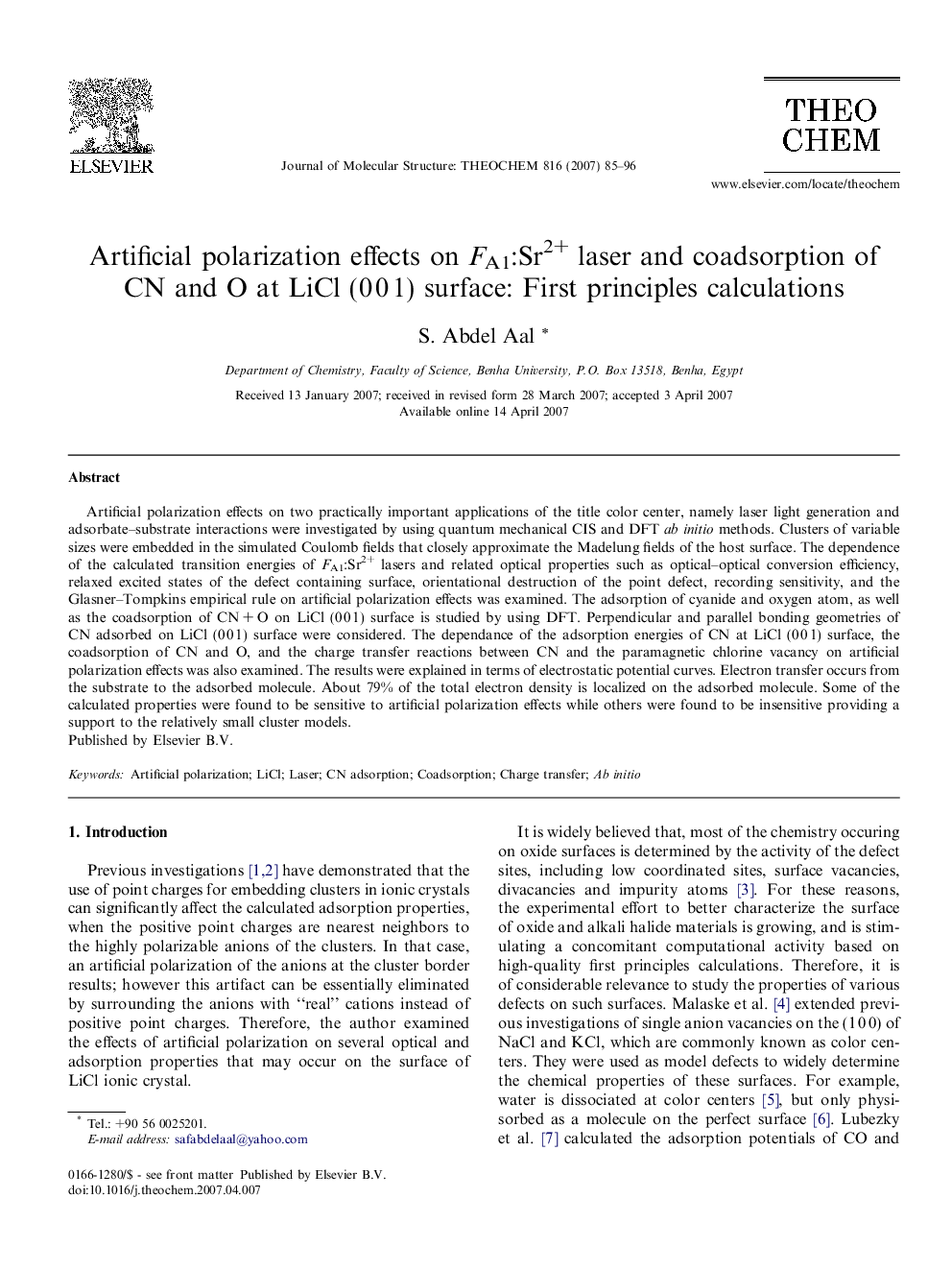| Article ID | Journal | Published Year | Pages | File Type |
|---|---|---|---|---|
| 5418940 | Journal of Molecular Structure: THEOCHEM | 2007 | 12 Pages |
Artificial polarization effects on two practically important applications of the title color center, namely laser light generation and adsorbate-substrate interactions were investigated by using quantum mechanical CIS and DFT ab initio methods. Clusters of variable sizes were embedded in the simulated Coulomb fields that closely approximate the Madelung fields of the host surface. The dependence of the calculated transition energies of FA1:Sr2+ lasers and related optical properties such as optical-optical conversion efficiency, relaxed excited states of the defect containing surface, orientational destruction of the point defect, recording sensitivity, and the Glasner-Tompkins empirical rule on artificial polarization effects was examined. The adsorption of cyanide and oxygen atom, as well as the coadsorption of CNÂ +Â O on LiCl (0Â 0Â 1) surface is studied by using DFT. Perpendicular and parallel bonding geometries of CN adsorbed on LiCl (0Â 0Â 1) surface were considered. The dependance of the adsorption energies of CN at LiCl (0Â 0Â 1) surface, the coadsorption of CN and O, and the charge transfer reactions between CN and the paramagnetic chlorine vacancy on artificial polarization effects was also examined. The results were explained in terms of electrostatic potential curves. Electron transfer occurs from the substrate to the adsorbed molecule. About 79% of the total electron density is localized on the adsorbed molecule. Some of the calculated properties were found to be sensitive to artificial polarization effects while others were found to be insensitive providing a support to the relatively small cluster models.
